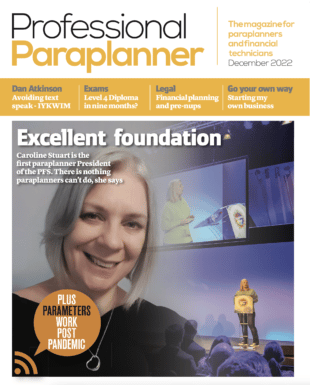The recent surge in UK gilt yields could boost annuity returns, putting the retirement product back on the radar for millions of retirees who previously might have dismissed them as poor value, says AJ Bell.
UK 30-year gilt yields have recently soared to their highest level since 1998, while 10-year gilt yields hit levels not seen since the financial crisis of 2008.
Annuities languished in the doldrums throughout the 2010s, in part due to gilt yields, which largely determine the rates offered by insurers, remaining persistently low. However, rising gilt yields in 2022, following Liz Truss’ mini-Budget, saw rates improve dramatically and AJ Bell said the latest surge should also filter through to improved annuity returns.
But while annuities may appear more attractive to retirees, Tom Selby, director of public policy at AJ Bell, said people choosing how to take a retirement income need to be aware of the pros and cons of both annuities and drawdown.
“It’s important when considering the merits of annuities and drawdown to appreciate that they have very different strengths and weaknesses. Rising annuity rates of course make them a more attractive proposition to retirees, but it’s important when making a choice to consider all relevant factors.
“The main strengths of annuities are the security of income they provide and the fact they do not require any engagement once you have selected a product that suits your needs. On the downside, annuities are inflexible and once you lock into an income, there is no going back. This means if your circumstances change, your income will not be able to adjust. This also means you will forgo the possibility of benefitting from long-term investment growth.”
Selby said people should consider how much they value flexibility over security, and whether they are willing to engage with their pension pot or whether they would prefer to take a hands-off approach, before choosing which route to take. They should also consider if income needs could change in the future as well as their health.
Selby explained: “Health and lifestyle are key, both when annuitising and taking a flexible income through drawdown. If you have limited life expectancy, then you might be able to get a better ‘enhanced’ annuity rate. Similarly, in drawdown, if you have a shorter life expectancy you might be comfortable withdrawing more. However, you still need to be confident your pension pot will survive as long as you do.”
Retirees also need to consider their priorities on death. While lots of retirees want to leave money to loved ones after they die, it is currently possible to pass money on tax free to nominated beneficiaries through drawdown, although this benefit is set to end from April 2027 following the government’s decision to bring pensions into the scope of inheritance tax.
Selby added: “This is not a binary choice, however, and it can make sense to combine an annuity, perhaps to cover your fixed costs, with the flexibility and growth potential of drawdown in retirement.”































